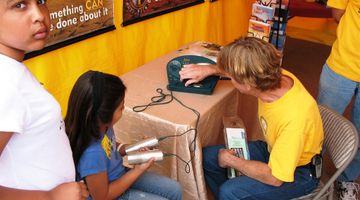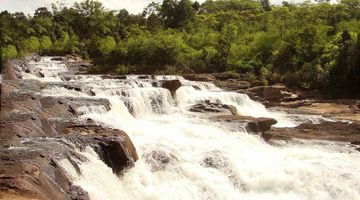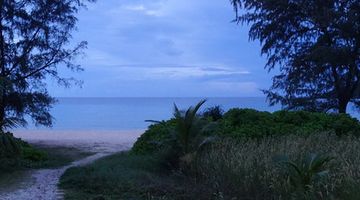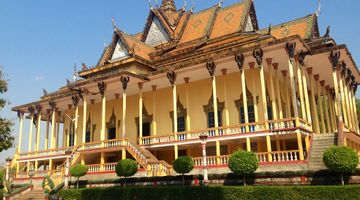Tonle Sap Lake – A Natural and Cultural Wonder in Cambodia
In a nutshell
Tonle Sap Lake is a natural and cultural wonder that is sometimes, somehow, glossed over by travelers seeking to make the most of their precious time in Cambodia. Truth be told, it may be the most culturally relevant and nature abundant destination in the entire country.
Why go to Tonle Sap Lake
The lake is the largest of any of those in the whole of Southeast Asia. Fascinatingly though, the lake’s area and depth vary drastically with the wet and dry seasons of the region. During the dry season, the lake covers an area of around 2,800 km and the water is but a meter deep. However, come the rains of the wet season and the truly wondrous ecological phenomenon that follows, the lake stretches out to an area covering a staggering 15,000 km with a depth of 8 meters. This is due to the Mekong River reversing its flow, now flowing directly into, rather than out of, the lake.
The lake is considered to be the lifeline of the country. Not only is the existence of a tremendous array of flora and fauna tied to the lake, but the people of the country depend on it too. The lake provides water to half of all Cambodian crops, provides a massive 75 per cent of the countries annual inland fish catch, and is responsible for 60 per cent of Cambodians’ protein intake. The lake has clear far-reaching implications for all Cambodians, even going as far as to be an important resource in transportation.
The lake is so much of everything. It is the lifeline to an entire country, an ecological wonder, a home to countless animals and plant species, and home to the local people who move their houses with the ebb and flow of the water on which they float. It is no wonder that in 1997, the lake became protected under the UNESCO Man and Biosphere Programme, ensuring the welfare of the lake and it’s people.
The unique embankment of the lake that is created by it’s varying water levels gives rise to an impossibly rich biodiversity of animals. Thousands of different kinds of birds, 300 different species of fish, 13 species of turtles, and 20 species of snakes all grace the waters and banks of the lake. Oh, there are also Siamese crocodiles, a critically endangered species. Casual.
When to go to Tonle Sap Lake
The best time to visit the lake depends on what you are hoping to get out of it. If you want to bear witness to the lake in all its glory, then you’ll want to head there in wet season, between the months of June and November. Opportunities to photograph or simply be in awe-inspiring scenes abound – from the flooded forest to the ‘streets’ of the floating villages.
However, should you consider yourself an avid birder, there will be no question about the best time to go. Come the dry season, hordes of birds situate themselves in a small concentrated area and make for some pretty spectacular viewing. Ultimately, there is no losing out with this place. So don’t worry too much about when your leave is, or what the dates are of the five days that the kids are away at camp.
How to get to and from Tonle Sap Lake
Getting onto the lake and into its peaceful surrounds is fairly painless. It is quite likely that your transport to the lake will be included as part of a tour that you have booked. If this is not the case, there are many boats that will offer you assistance at the various ports, albeit at an often-inflated price.
The predominant gateways onto the lake are Siem Reap and Phnom Penh. Many tours of the lake depart straight from these cities, making your exploration of the lake very accessible.
However, you can also get onto the lake from the north westerly city of Battambang. Overall, it is unlikely that you will have any difficulty at all. Get in touch with the company you want to do your tour with and clear any details that will set you on your way.
Attractions around Tonle Sap Lake
The lake provides incredible opportunities to immerse yourself so intensely into a world so foreign from your own. Between the opportunities for authentic exposure to locals of the lake, and the opportunities to explore, be amazed, and just be in the natural surrounds, there is no shortage of entertainment here.
See the local way of life
The opportunity to see a way of life so removed from the practices of the world we know is so very special. There are homes that are built from slats of wood and sheets of corrugated iron. They are poised on barrels that rest on the surface of the water, or have as their foundation the underside of a boats hull. Small wooden boats float amongst the houses, long poles and strong arms propel them forward. Long shirts, big hats, fishing nets, and warm smiles on the wrinkled faces of locals. This is a scene so delicately beautiful, a scene that is sure to change the heart and mind of one witnessing it.
Visit Kompong Khleang – the most authentic village on the lake
The most untouched and uncorrupted village to visit is Kompong Khleang. If you do anything on the lake, visiting this village should be it. This whimsical and appealing picture is replicated almost a countless amount of times over the lake. More than 100 floating communities live on the lake, all peacefully cohabitating and equally open to the presence of respectful tourists.
Get your camera ready at Kompong Phluk
A visit to Kompong Phluk, a small, untouched stilted village on the floodplains of the lake is an absolute must. Schools, a police station, a town hall, and of course many homes sit on stilts that are over 6 meters above the water level. The village is a photographer’s dream. Striking images of soulful eyes and simple lives just beg to be immortalized in print. The village is nestled amongst a flooded mangrove forest that is truly something to behold. Green leaves provide shade for the trees like an all-encompassing umbrella. The winding trunks of the trees leave similar shimmering shadows on the water over which they tower. A boat ride through the empty spaces of the forest is easily one of the most unique and interesting natural experiences available to you.
Take a sunset cruise around the lake
While the lake is of course incredibly beautiful during the day, the soft, warm glow that blankets the lake around dusk creates something almost entirely new. There are few better spots to be than the comfort of a boat slowly cruising the expanse of the river. Grab a drink, have a conversation with someone significant or someone you met five minutes ago and rejoice that your life’s story has included this moment.
How to choose the best tour around the lake?
Trying to decide which tour of Tonle Sap to do is one of the better dilemmas one could have.
- Do you decide to visit the famous Prek Toal Biosphere and surround yourself with countless birds?
- Should you spend your precious time visiting one of the many villages?
- Should you do a half-day or full-day tour?
- Should you quit your day job and be a tour guide for the area? Tough decisions.
One of the most renowned companies that run fantastic tours of the lake is Tara Tours. While their tours are not cheap, they will ensure that you are safe and not the victim of a tourist trap or scam. Prices of tours vary greatly according to duration, services and itinerary. You also have the option of going on a private tour – an incredible experience that, should the cost not be beyond your means, should be readily embarked on! Read up online about the various companies offering packages and take it from there.
An absolute must is the tour of Kompong Phluk. The stilted houses and flooded forest are iconic attractions of the lake and really, should be visited no matter the cost. The tour will cost around KHR 203,000 with Tara Tours, but is worth every single penny.
The sunset tour is a very popular one. It is also very easy to understand why. The tour will cost you around KHR 150,000, and will feature all the food and all the drinks that you heart could desire. It will of course also feature shades of colours on the water that you have never seen, and a feeling in your tummy that feels something akin to Christmas morning.
Because the once beautiful and serene floating village of Chong Khneas has become commercially overrun and is plagued by dishonest locals, a much preferable option is the floating village of Kompong Khleang. The village is comparatively very remote and untouched and will surely provide the experience that Chong Khneas used to.
A tour to the Prek Toal biosphere reserve is another really special thing to do on the lake. There are just so many rare bird species, beautiful mangrove trees, and as many tourists witnessing the spectacle with their jaws agape. This tour is definitely the best in the dry season, so be sure to plan your trip accordingly if this is something that you don’t want to miss.
A tour of the surrounds of the lake on the back of a motorbike is a great way to punctuate your otherwise very slow, contemplative and awe-full meandering around the lake. The tour begins in Siem Reap and takes you through rice paddies and traditional villages. You will also visit the Buddhist Pagoda and spend an appropriate amount of time in a hammock between your gallivanting.
Travel tips
Because of the commercialization of some parts of the lake, there are some seedy characters who hang about looking to take advantage of tourists. In order to avoid this, it is best to book your tour of the lake through a reputable company. While the tours are not cheap, they do not have any hidden expenses like checkpoint fees, or have you paying some unidentified transfer cost.
Be sure to not give any money to people telling you stories about orphans and poor children who need your help. The people tugging on your heartstrings are doing so for their own gain, and have no intention of using the money you end up giving to them for good use. Hang onto your money and stay away from these manipulative characters. These kinds of people are prevalent in the floating village of Chong Kneas. As a result, it may be worth giving this spot a miss.














































